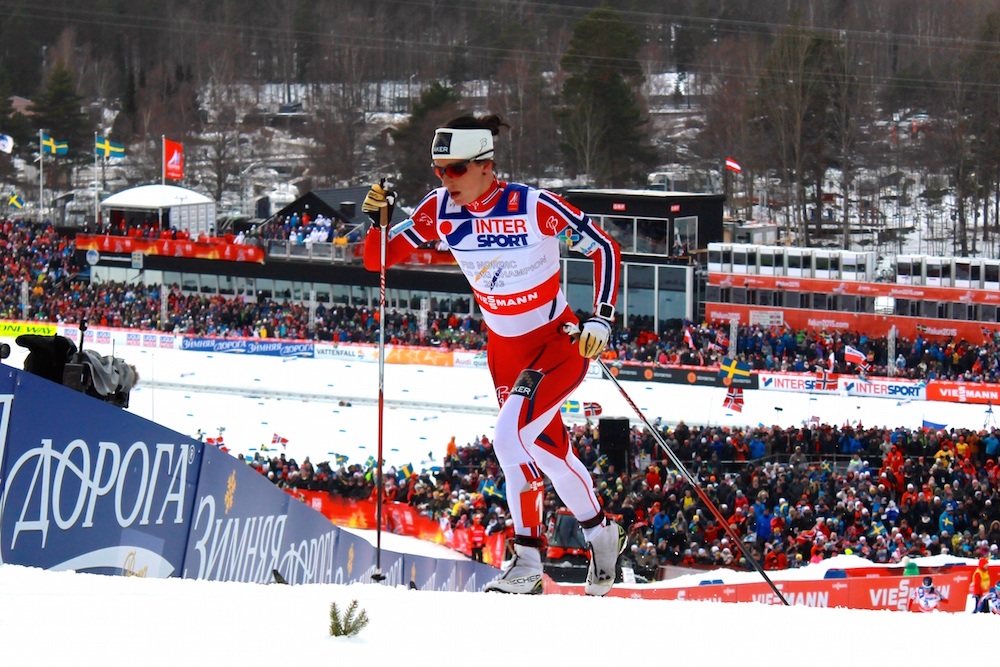
How predictable do you find the results of a cross-country ski race? A study published in December comparing within-athlete and between-athlete variability in multiple sports found that cross-country ski races were among the most predictable of athletic competitions.
The study, published in the journal Sports Medicine by New Zealand-based researchers Rita Macata and Will Hopkins, compared sixteen different studies of competition in different sports. First, they assessed data on how consistently top athletes within each sport performed compared to themselves. Then, they looked at how large these variations in performance were compared to winning margins.
For cross-country skiing, the data was based on a 2014 paper in the International Journal of Sports Physiology and Performance written by Matt Spencer, Hopkins, and others, who were based at the time at the Norwegian Research Center for Training and Performance in Oslo. Spencer and the co-authors looked at results from the 2002 to 2011 seasons for more than 400 skiers competing in World Championships, World Cup, and Olympic races.
After removing effects like snow conditions and altitude, the authors found that the coefficient of variation for skiers was about 1.5 to 1.8% of race time from race to race, with the best athletes (the top 10 on the World Cup that season) having more consistent performances and only varying by 1.1 to 1.4%. This is perhaps not surprising: the best athletes are the best-trained and able to turn in good performances race after race.
In the December paper, Macata and Hopkins compared that to values calculated in other sports. Within-athlete variation in skiing fell somewhere in the middle, along with many other endurance and running-like sports.
The competitions with the smallest within-athlete variation came in skeleton and 1,000-meter speedskating. The authors explained that this was because most of the outcome in these races was determined by having a very fast start, and little changed after this initial burst. Thus, they called these “low-skill” sports which depended mainly on one highly trainable factor.
Those with the most variation? Surfing, where competitions are won and lost based on a judge’s objective score and tricks can either be successful and go wrong, and women’s weightlifting, which the authors explained might have extra variation because it is relatively new as an Olympic sport and the field is not so deep or well-developed.
The next step was to compare this within-athlete variation to among-athlete variation. To do this, researchers often use a metric called “ICC”, or the Intraclass Competition Coefficient. It essentially tells how well-correlated the results of one competition are to another.
Interestingly, the Spencer paper found that while overall results in cross-country skiing were very predictable, with >90% correlation between competition results both within and between seasons on the World Cup, it was much harder to predict the top 10. In the men’s field, there was practically no correlation between results of races from one weekend to the next. In the women’s field, the ICC was about 30% in distance racing, but much lower in sprints.
Why so low, particularly in the men’s field? Because the top athletes are so well-matched, within-athlete variability in performance was able to affect the outcome. The women’s field was less deep, the authors argued, so the within-athlete variations did not so often overwhelm the differences between athletes.
However, when Macata and Hopkins compared the ICC values to that of other sports, they used the high values of all the results rather than the low values of top-10 results. They also did this for the other sports, since it was difficult to find published ICC values at all, much less for only the best athletes (more papers had calculated within-athlete variation than ICC’s).
And with that overall World Cup field, cross-country skiing is more predictable than most other sports, they concluded. Rowing had an ICC of 65%; speedskating 74%; triathlon, 36%. Down at the bottom was surfing, where the difference of scores for any given athlete between two competitions could be extremely large. There, the ICC showed that results from one event to the next were only 18% replicated.
Of course, the review was not completely exhaustive. They used only sports which have time-, weight- or distance-based results, like track and field, rowing, speed skating, triathlon, and cycling. Surfing was the anomaly in terms of being a judged sport, and potentially other judged sports (like gymnastics, figure skating, or freestyle skiing) would have similarly low ICC numbers.
They also excluding team scoring-based sports like soccer, basketball, and hockey, where it’s difficult to directly compare performances between games.
But for the type of sports they could analyze, and find data for, cross-country skiing came out on top.
“For highly predictable sports, such as cross-country skiing, placings in any single competition are a good representation of a ranking of athletes’ abilities,” the authors wrote.
One takehome message? This should make it easy for coaches to calculate, using testing, what magnitude of improvement would win an athlete an extra medal.
“In this review we focused on the within-athlete variability as a statistic to derive the smallest and other important magnitude thresholds for changes in competitive performance,” Macata and Hopkins concluded. “These thresholds can be transformed into thresholds for research on factors affecting performance in laboratory and field tests.”
Chelsea Little
Chelsea Little is FasterSkier's Editor-At-Large. A former racer at Ford Sayre, Dartmouth College and the Craftsbury Green Racing Project, she is a PhD candidate in aquatic ecology in the @Altermatt_lab at Eawag, the Swiss Federal Institute of Aquatic Science and Technology in Zurich, Switzerland. You can follow her on twitter @ChelskiLittle.



